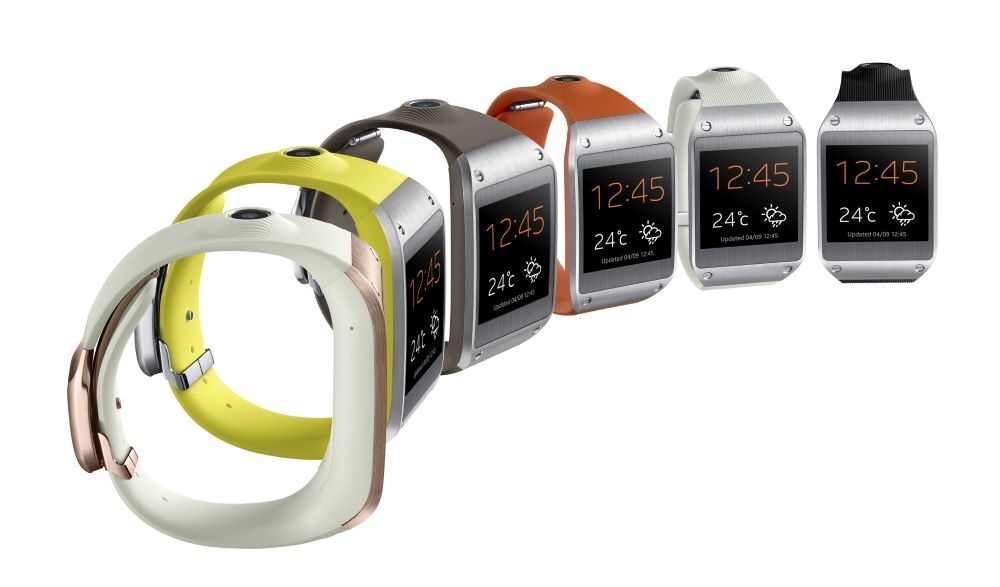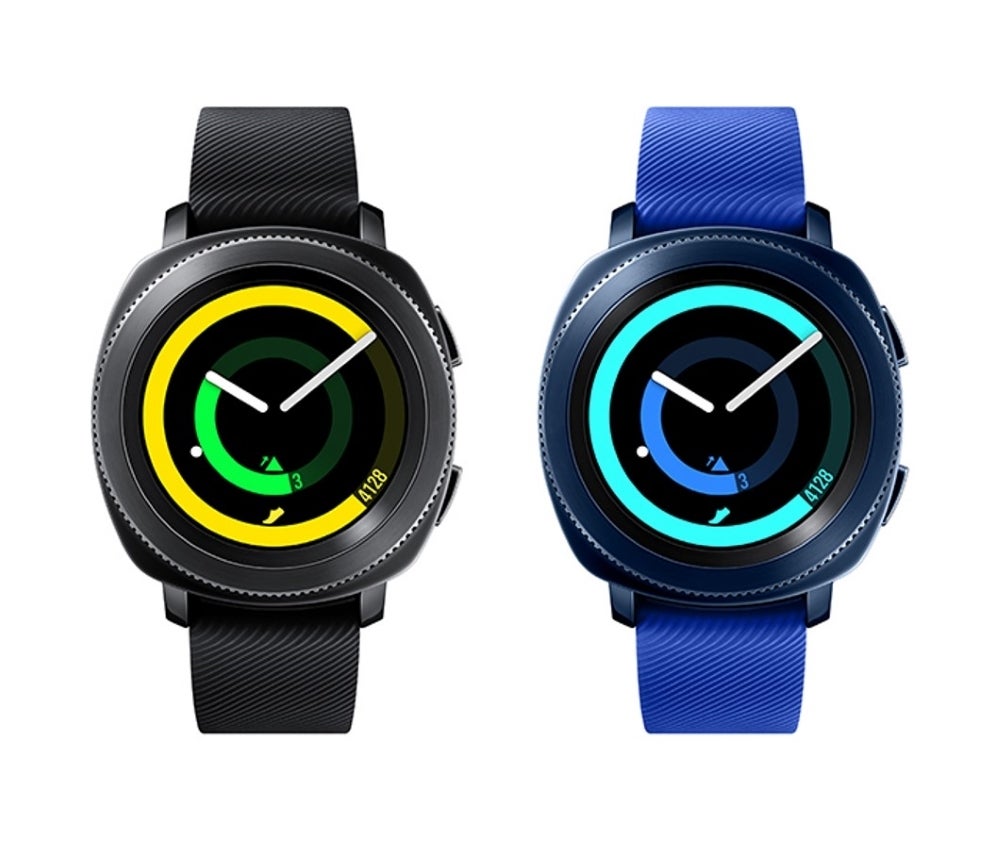unveiled officially.
Apart from all that, sports and smartwatch aficionados are counting the hours until the premiere of the
In honor of the upcoming Unpacked event, we showed you the evolution of the Galaxy Buds series – and now, it’s time for another juicy gallery! Prepare for the evolution of the Galaxy Watch series!
2013-2017: The Galaxy Gear era

It all started in 2013! | Image credit – Samsung
Revealed in September 2013, the groundbreaking Galaxy Gear brought the Galaxy experience into daily life. This wearable boasted a 41.4-millimeter display, enabling users to make and take calls, schedule events, set alarms, and check the weather using their voice. The 1.9-megapixel camera on the strap, combined with the innovative Memographer feature, allowed for capturing photos and short videos on the go without needing a smartphone.


The second-generation Samsung Gear 2 came in February 2014. | Image credit – Samsung
Samsung followed up with the second-generation Samsung Gear 2 in February 2014. This iteration was lighter and thinner than the original, featuring an extended battery life and more capabilities independent of a smartphone. Users could monitor their heart rate and track workouts in real-time with the built-in heart rate sensor, or enjoy music directly from the watch thanks to its internal storage. Launched simultaneously, the Samsung Gear 2 Neo offered a similar experience, with all the features of the Gear 2 except the camera, giving consumers an alternative choice.


The Gear S (on the left) was pretty interesting. | Image credit – Samsung


The Gear S3 was more of a classic timepiece. | Image credit – Samsung


The Gear Sport included a Water Lock. | Image credit – Samsung
The Samsung Gear Sport, the final model in the Samsung Gear series, was designed with an active lifestyle in mind. With 5 ATM water resistance, the watch was suitable for swimming. Enhanced water resistance features included a Water Lock mode to prevent accidental touchscreen activation in strong currents.
2018-2019: The Galaxy Watch is born!


The Galaxy Watch materialized in August 2018. | Image credit – Samsung
The Galaxy Watch retained the signature circular bezel of previous models and introduced an hourly alarm and the ticking sound of a second hand for the first time. Available in three colors and two sizes, 42mm and 46mm, this adaptable watch featured stress and sleep management tools to promote health and wellness. Additionally, users could monitor workouts from 39 different types of exercises, offering more variety than any other watch on the market at the time.


The Galaxy Watch Active . | Image credit – Samsung
The flexible 20-millimeter watchband provided fashion-conscious users with various options to express their style. Meanwhile, health-focused users could monitor their exercise, sleep, stress levels, and blood pressure in real time, even tracking the duration of REM sleep compared to other sleep stages.


The Galaxy Watch Active 2. | Image credit – Samsung
In August of the same year (2019), the Galaxy Watch Active 2 advanced personalized health and wellness management for those pursuing healthier lifestyles. Beyond the rotating bezel and other user experience improvements, the My Style feature allowed users to create more stylish and customized watch faces. Additionally, the upgraded Galaxy ecosystem offered better connectivity and everyday convenience.
2020-2021: Integrated healthcare and Wear OS


The Galaxy Watch 3 featured a stainless steel circular bezel. | Image credit – Samsung
In August 2020, Samsung released the Galaxy Watch 3. It featured a stainless steel circular bezel and came in larger 41- or 45-millimeter sizes with a lighter, thinner body. For the first time, a titanium model was also available. The watch offered health, fitness, sleep management, and blood pressure monitoring, as well as ECG readings and a blood oxygen feature.
In August 2021, Samsung launched the Galaxy Watch 4 series, including the Galaxy Watch 4 and the Galaxy Watch 4 Classic with a rotating bezel. The new BioActive Sensor measured health metrics like blood pressure, ECG, and blood oxygen saturation more accurately. Users could also measure their body composition. The watch ran on the new Wear OS, developed with Google, offering a wider range of apps. The One UI Watch update improved connectivity with Samsung devices.
2022-2023: better, faster, slimmer!


The Galaxy Watch 5. | Image credit – Samsung
In July 2023, Samsung launched the Galaxy Watch 6 series. This iteration focused on delivering personalized health solutions with enhanced features. The Galaxy Watch 6 featured a slimmer bezel and a display about 20% larger than previous models for improved visibility. It retained the signature circular design, while the Galaxy Watch 6 Classic incorporated a rotating bezel reminiscent of traditional analog watches. A new button design facilitated easy swapping of watchbands with a single click.
Equipped with a highly sensitive BioActive sensor and a powerful processor, the Galaxy Watch 6 series doubled down on providing specialized health metrics. These ranged from advanced sleep tracking and personalized fitness coaching to comprehensive heart health monitoring.
2024: Enter AI!
So, what’s next for the Galaxy Watch? It’s clear that the future holds AI: it can’t be otherwise, since Samsung started the year with the Galaxy S24 series and the Galaxy AI pack.
👇Follow more 👇
👉 bdphone.com
👉 ultraactivation.com
👉 trainingreferral.com
👉 shaplafood.com
👉 bangladeshi.help
👉 www.forexdhaka.com
👉 uncommunication.com
👉 ultra-sim.com
👉 forexdhaka.com
👉 ultrafxfund.com
